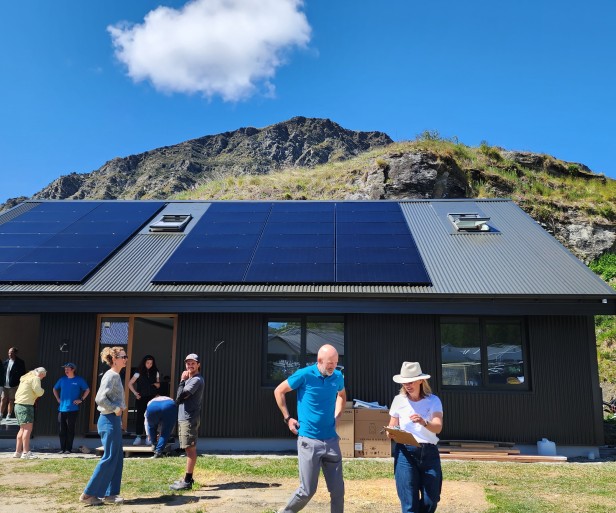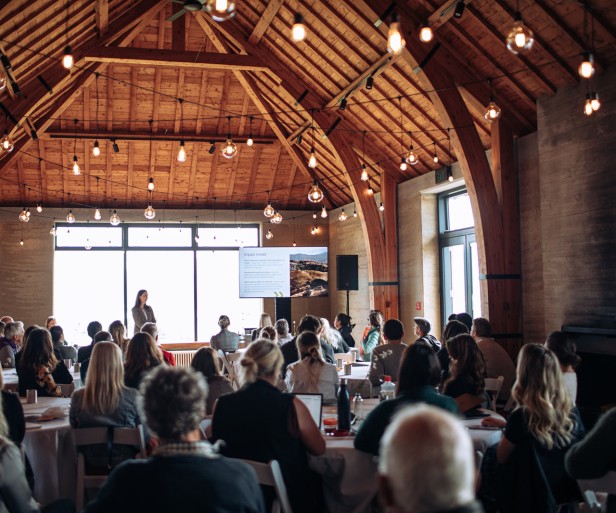Saving the planet from space

An entrepreneurial young Englishman, with a passion for plants and a love of technology, is gaining international recognition after developing the world’s first system that uses satellite imagery to phenologically identify invasive plants.
Fennar Ralston, who moved to Queenstown from Indonesia during the Covid-19 pandemic, reached out to leading governments around the world with his innovative idea. Skyris.ai uses satellite imagery to identify hidden spots where invasive plant species are established, enabling governments and landowners to eradicate them before they take hold.
Ralston is just 27 and already turning heads among the experts, recently securing an exciting opportunity with global implications, the specifics of which are presently restricted by confidentiality agreements and legal constraints.
Put simply, Ralston says Skyris uses hundreds of high-speed low orbit satellites that circulate the globe taking daily photographs and transmitting them back to earth via radio. Ralston has partnered with leading US satellite researchers Planet Labs, which provides satellite images to the US government. This all came about through a simple request for help.
“I was trying to conduct my research and asked Planet Labs if I could tap into their satellite system as I’d successfully identified these groups of plants using Sentinel-2 satellite imagery,” Ralston says.
Initially, making contact was challenging, but the significance of his discoveries clearly left an impression. As a result, Skyris is now fortunate to be among the 25 companies selected for Planet Labs’ prestigious Startup programme.
To phenologically identify plants from space, Ralston needed to capture plants in each season which he’s successfully achieved.
His research took four and a half years, but he’s developed a unique product that uses Convolutional Neural Networks (CNN’s) and Computer Vision - a type of AI technology that allows humans to teach computers how to visualise,” he says. He realised early on that none of the world’s leading researchers were applying this technology the way that he was using it.
“I worked out that looking at how plants changed over time was the key and we used that information to identify each plant’s signature from space,” he says.
For Ralston, who’s been passionate about plants and computers since a very young age, this all makes perfect sense.
“I have my dad to blame for my love of plants. He loved mushrooming and when I was young,we’d go walking in the English countryside foraging,” he says. “As I got older, I got into identifying and looking for plants that I could pick and eat.”
At seven, Ralston was taking computers apart and rebuilding them and by age 10 he was coding.
Ralston hails from a family of entrepreneurs. He had his own social media company at 18, and then ventured into consumer analytics. He was shoulder tapped in 2018 to work with Cyber Tec Security, which he’s helped grow into the third largest Cyber Essentials certifying body in the world.
Ralston started Skyris as a ‘bedroom project’. “I was out exploring nature in New Zealand and saw Douglas Firs growing in the middle of the bush. They’re an American plant, so shouldn’t have been there,” he says. Douglas Firs are incredibly damaging, which inspired Ralston to find a solution.
“I was working on research projects using computer vision algorithms and worked out how that could be applied to finding invasive plants.”
Having been taught as a child that if you don’t ask you don’t get, he rang governments around the world and shared his knowledge with their environmental teams.
That boldness paid off!!
Since then, Ralston’s had “multiple breakthroughs”. “When I first phenologically identified plants from space and proved it was possible that was a ‘wow’ moment because I could achieve with accuracy figures that no one had achieved before,” he says. “I’m now identifying plants and can track how they spread over time.”
He’s using the data from Planet to monitor land for clients, assessing the extent of an invasive plant problem, seeing down to the tiny plants beneath the canopy.
“For me Skyris just combines a love of plants, computers and business.”
Ralston’s passionate about the environment and is a regular volunteer at the Wilding Conifer Group.
It’s early days with a lot of work to do yet to identify the extent of the problem in NZ, but he says he’s grateful that people care about the environment and want to help.










